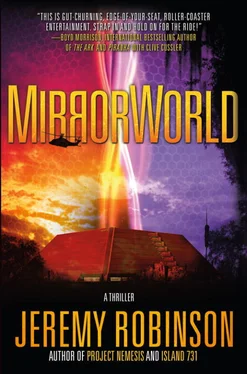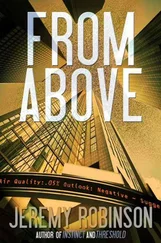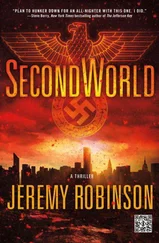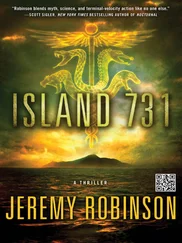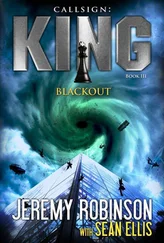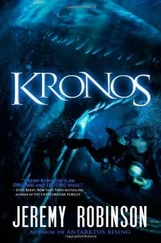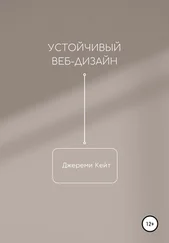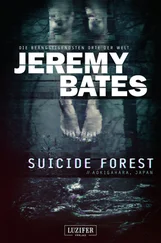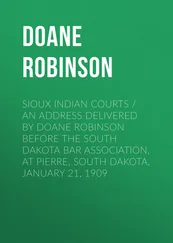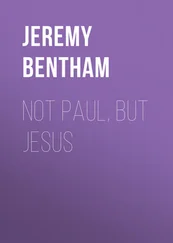I look ahead. There’s a cemetery on the right, known as a “city of the dead” in this part of the world because of the rows of sun-bleached, aboveground tombs. New Orleans is below sea level, built atop land that should be a swamp. Dig a few feet down and you hit the water table. So you have three options for burying the dead: weigh the bodies down and let them sink through the four feet of water filling their six-foot grave, bury the dead in shallow graves to be uncovered by harsh weather and floods, or build them a concrete, granite, and marble city aboveground. Since no one wants moist cadavers floating around the city every time it floods, the dead reside in endless rows of bleak structures ranging from economy stacks to opulent mansions, the inequality in life retained in death.
But this city of the dead is not our destination. That doesn’t mean it’s not populated or a risk, however.
I steel myself for a fright and gaze into the mirror dimension, noting that the shift in my vision now causes no pain at all.
There’s a colony at the center of the graveyard. A small one. And while the swamp has been held at bay in our dimension, the mirror world is under a layer of water. Trees, laden with heavy coils of black gunk, rise from the liquid, which is reflecting the dark purple sky. Despite all the water, there isn’t a ripple of movement. There are no Dread here and haven’t been anytime recently.
“They’re everywhere,” Cobb says as we pass another small colony. I look ahead, to the right, and see more, all just as empty as the first. Turning my eyes back to the real world, I see what Cobb does. Cemetery after cemetery. Drawn to bury our dead on the colonies, this stretch of swamp held back by concrete has become littered with tombs and mausoleums. Tall willow trees, heavy with hanging Spanish moss, sway in the wind, creating a landscape that is eerily similar to the mirror world. I find myself trying to slip farther out of that place, but the trees are here, rooted in my home frequencies. There’s no escaping them.
“It’s just up ahead,” Blair says, turning right. The tracking device last showed Maya in this part of the city. It uses GPS positioning, so once she was pulled back into the mirror world, it stopped working and, since there are no satellites in the mirror world, won’t work there, either. If we get within a half mile, a local transmitter in the embedded device will do the job, but until then we’re relying on her last-known location.
“Stop,” I say. “Pull over.”
He stops short of a bridge that crosses one of many ocean inlets cutting into the city. On the other side of the bridge is St. Louis Cemetery No. 3. Of the three big cemeteries in New Orleans, this is the largest and most opulent in terms of crypt construction. Just two miles from the French Quarter, it was flooded during Hurricane Katrina, but, thanks to the heavy stone tombs, the dead stayed where they were supposed to.
I climb out of the car, eyes on the still-distant cemetery. It’s a typical summertime New Orleans day. Mid-nineties. Humid. The sky is blue and clear. But there’s no denying something feels off. While this part of the city is relatively quiet, I can hear sirens in the distance. The drone of an angry crowd rises and falls with the wind.
But not here.
I take a deep breath, count to seven, let it out for seven, and then let myself see the mirror world again.
Something’s wrong.
I climb atop the SUV, its roof bending beneath my feet. I have a clear view of the mirror world beyond the inlet, which is now pea-soup green and clogged with glowing seaweedlike veins extending out of the muddy banks.
“What is it?” Cobb asks. I hear his voice and the car door opening, the shift of the vehicle beneath my feet as he exits, but I can’t see him. “What do you see?”
“This can’t be the right place,” I say. There’s a colony, but it’s just like the others, small, devoid of life, and partially lost to the swamp. Abandoned. I turn to look at Cobb but forget to shift my vision.
That’s when I see it.
The colony.
It’s so vast that I take a step back and slip on the SUV’s windshield. I tumble back with a shout, landing on the hood and rolling to the concrete. When I open my eyes, I’m under the bleak water of the mirror world. For a moment, I panic, but then remember that I’m only seeing this world. I haven’t fully entered it yet. I shift my vision back to the real world and stare at the blue sky above.
Blair and Cobb appear above me, their concerned looks blocking out the sky.
“What happened?” Blair asks.
“It’s not at the cemetery,” I say, and point back the way we came. “It’s behind us.”
They both turn around.
“The park?” Cobb asks.
Maya and I spent two full days exploring the park and its variety of tourist-friendly locals. Twice the size of New York’s Central Park, the thirteen-hundred-acre City Park is a massive collection of park greens, willow and oak trees, two stadiums, botanical gardens, an art museum, Storyland for the kids, a lake, several golf courses, and more, all featuring New Orleans’s telltale old-world style mixed with hints of bayou. In the mirror dimension, it’s populated by one single structure.
The colony.
The structure is massive, resembling a half-sized black and gray version of Australia’s Ayers Rock—Uluru to the natives—an 1,100-foot-tall, six-mile-circumference sandstone formation. While Uluru rises from the flat plains of the bush, the colony is partially concealed by the tree-laden swamp, but it still manages to tower above it all. While looking at the closer, smaller colonies, I’d missed the one looming over them all, so big that it could be mistaken for landscape. I hadn’t seen it before because the cemeteries and smaller colonies kept my eyes on the right side of the road.
Several of the large six-winged centipede Dread lazily circle the perimeter above the colony. A few mothmen, just distant specks, flit about, entering and leaving the colony via one of many tunnels hewn in the outer wall. The base of the structure is hidden from me by the vast swampy jungle that is the mirror world.
I slip my vision back into the real world. Instead of the colony, I see a straight road leading to the New Orleans Museum of Art, which, with its Roman-style columns, looks like it would be more at home in Washington, D.C. Three colorful banners hang behind the columns like an afterthought, added when someone realized the parliamentesque style of the exterior didn’t scream, “art.” Beyond the museum is the park: endless trees with hints of buildings hidden within. I shiver at the idea that all the people using this park, to play with their children, watch a game, or experience a little culture, are surrounded by Dread, unknowingly moving through the heart of a colony. Of course, this also explains the many reports of hauntings within the park, and probably accounts for the prevalence of black magic, voodoo, and New Orleans’s dark history.
“Are you okay?” Cobb asks, helping me to my feet.
I take stock of my body, paying attention to aches and pains, and find… nothing. “I’m… fine.”
He shakes his head, unbelieving. “Don’t be macho.” He reaches for my head, pulls me down to inspect the fresh stitches. “What the… this was a good gash, right?”
I never saw it, but remember the tree branch cracking against the top of my head. “Allenby stitched it?”
“But there’s no wound,” he says. “There’s just a line of stitches. Lift your shirt.”
I comply and am surprised when Cobb flinches away from me. “Holy shit.”
I don’t look. I can’t. “I’m still changing, right? Becoming like them?”
Читать дальше
